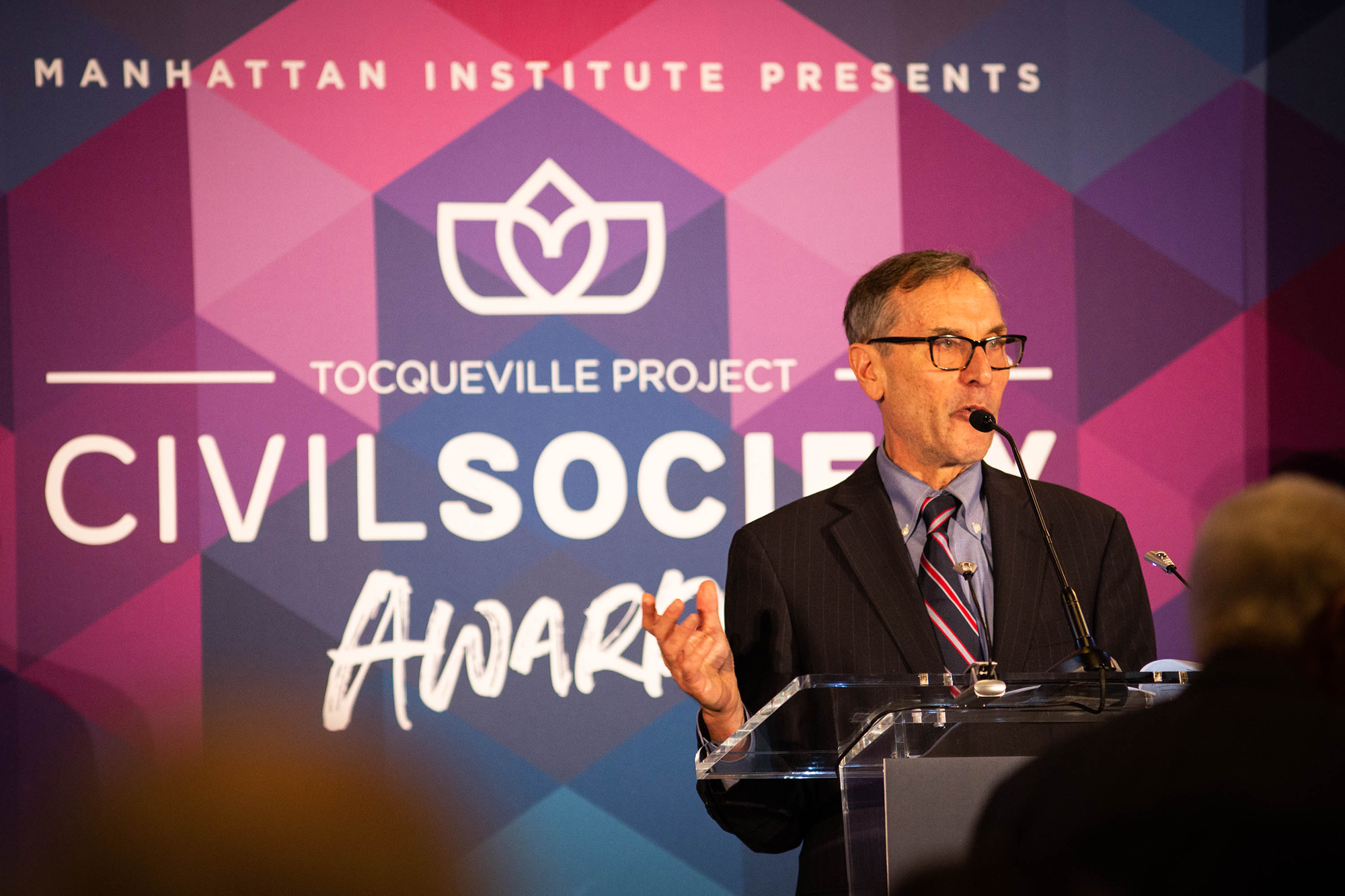
Americans are materially far better off than they were a century ago. A vast social safety net enables even those at the bottom of the socioeconomic ladder to have their basic needs met. And yet, despite ample government spending on various welfare programs—at taxpayer expense—many Americans fail to reach their full potential.
In “Who Killed Civil Society?: The Rise of Big Government and Decline of Bourgeois Norms,” released Sept. 10, Howard Husock argues that the promotion of middle class values is missing from our attempts at social uplift.
A senior fellow at the Manhattan Institute for Policy Research, Husock was moved by his father’s life story to write about this issue. Though orphaned at age 10 during the Great Depression, his father still enjoyed a pleasant childhood and successful life. Husock recalls his father crediting an entity he referred to as “the Agency” with equipping him to live happily and comfortably.
“The Agency,” Husock discovered, was the Juvenile Aid Society, a private charitable organization.
In “Who Killed Civil Society?,” Husock examines the attributes of effective charity, analyzing the merits of values-based civil society and the failures of the modern welfare state.
Since the late 19th century, six figures have shaped the rise, decline, and revival of civil society: pioneering philanthropist Charles Loring Brace, social reformer Jane Addams, social work founder Mary Richmond, social worker Grace Abbott, civil servant Wilbur Cohen, and contemporary social activist Geoffrey Canada. Husock tells each of their stories, explaining the lessons we can learn from their work.
In 1853, Brace founded the Children’s Aid Society to care for New York City’s street children. Guided by the idea that children’s principles were decisive in determining their well-being, he provided not only food and shelter to needy children, but also educational and spiritual opportunities, and taught them good behaviour.
Brace believed that individual strength and integrity were the keys to a fulfilling life, and taught children not to resent their circumstances, but instead to overcome them through honest, hard work. Because it was mostly privately funded, the Children’s Aid Society was free to pursue causes according to its own vision.
In Brace’s lifetime, the Children’s Aid Society empowered more than 170,000 children to become upstanding, productive citizens. Husock upholds Brace’s efforts as a model for charity work, and contrasts it with that of later reformers whose work departed from his ideals of inculcating social norms and relying on private funding.
Addams began her philanthropic career in 1889 as the founder of Hull House, a settlement house on Chicago’s West Side in which better-off residents lived among immigrants and members of the lower class and taught them American values by example.
Husock writes that Hull House’s unabashed moralizing would be discounted as patronizing today, but that the mingling of classes and intentional promotion of bourgeois norms is imperative to a healthy society. Addams, however, later redirected her efforts to social reform, discrediting the power of individual initiative and instead promoting the idea that it was the government’s responsibility to facilitate economic justice.
The head of several prominent charity organizations, Richmond wrote “Social Diagnosis,” which outlined the tenets of modern social work. She popularized the concept that people’s deficiencies of character or psyche were the primary factors that caused their misfortune, and needed to be treated. Turning from the instillation of universally beneficial bourgeois norms, she categorized people’s ills and prescribed therapies to “cure” them.
In the twentieth century, Abbott and Cohen’s work proved detrimental to civil society. Abbott, a respected authority on social work, professionalized social work and furthered the idea that social ills must be analyzed and treated. As one of the principal engineers of the expansion of the social service state, Cohen transformed — and often corrupted — private organizations with federal funding. Both believed that it was up to the government, and not to private citizens within communities to care for those in need.
Husock charts the decline of civil society in the middle four chapters of “Who Killed Civil Society?,” but ends the book on an encouraging note by praising the work of Harlem Children’s Zone founder Geoffrey Canada. Canada aimed to improve central Harlem by setting norms for children in the neighborhood.
Mostly privately funded, the Harlem Children’s Zone cleaned up portions of Harlem and established a range of programs to support Harlem families and prepare Harlem students for college. Canada is focused on long-term results, but the Harlem Children’s Zone’s accomplishments are nonetheless impressive: 27,573 adults and children were served by its programs in 2017 and 861 students who participated in its programs have gone on to college.
In “Who Killed Civil Society?,” Husock provides a candid inquiry into the foundation of successful charity work, illustrating the unmatched efficacy of privately funded, values-based civil society. Unrestrained by political correctness, he champions bourgeois norms in a time when some consider them old-fashioned, irrelevant, and even offensive, providing an honest assessment of the needs of America’s poor and the strength of traditional principles and individual integrity.
Husock’s insight reveals that diligence and neighborliness are timeless and that civil society remains the most powerful defense against despair.

